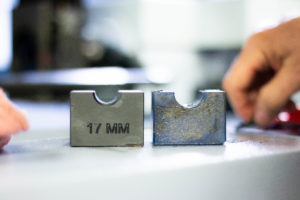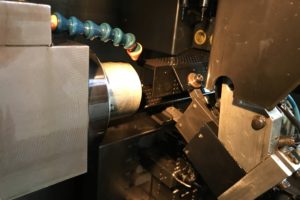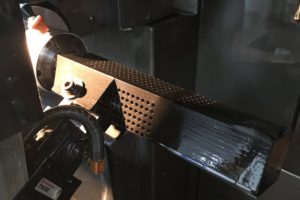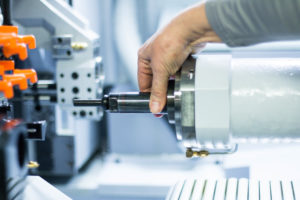3D Printing of Sub-Spindle Ejector Pins, Guide Clamps, and Part Catcher Baskets for Use on In-House CNC Machines
Additive manufacturing, sometimes called 3D printing, creates solid objects based on computer-designed 3D models. One of the most popular forms of additive manufacturing, fused deposition modeling, achieves this by laying down a great number of consecutive thin layers of material until the product is completed.
Recently, manufacturers discovered how to use composite materials, including fiberglass and carbon fiber, for 3D printing. Using these materials improves the structure and durability of the end products.
Although manufacturers have yet to adopt composite 3D printing en masse, industry leaders are beginning to catch on to the versatility this process offers. Composite 3D-printed materials are already providing scaffolding in construction projects and forming essential components in automotive and aerospace applications.
Adopting new technology necessitates overcoming the unforeseen problems and risks associated with it. As an early pioneer of 3D printing with composite materials, MF Engineering has had to put its problem-solving skills to the test. Read on for an example of how we used composite 3D printing to overcome machining challenges in an industrial setting.
Problem
We need to replace metal sub-spindle ejector pins, guide clamps, and part catcher baskets on some of our in-house equipment so that they could better withstand wear and tear caused by CNC machining processes. The previous components were costly to maintain and extremely cumbersome. Purchasing new parts was expensive, and the time it would take for delivery didn’t line up with our upcoming production schedules.
To make the designs compatible with composite materials, we had to refine the product’s blueprints.
Solution
To solve the problem of heavy and expensive-to-maintain metal machine components, our analysts determined the best course of action was to replace these components with ones made from carbon fiber and other composite materials. These materials cost less to produce and were easier to assemble into the final design.
We created CAD mockups of the desired parts, which our printers were able to assemble in minutes. This means that we were able to complete the final design in mere hours.
The finished part was able to meet the following specifications:
- Tolerances of ±0.002
- Good performance on visual and dimensional inspection tests as well as application trials
- Ability to quickly scale up from prototyping to low- and medium-volume production runs
- Optimized fixturing and workholding applications
- Lighter weight, which facilitated easier installation





